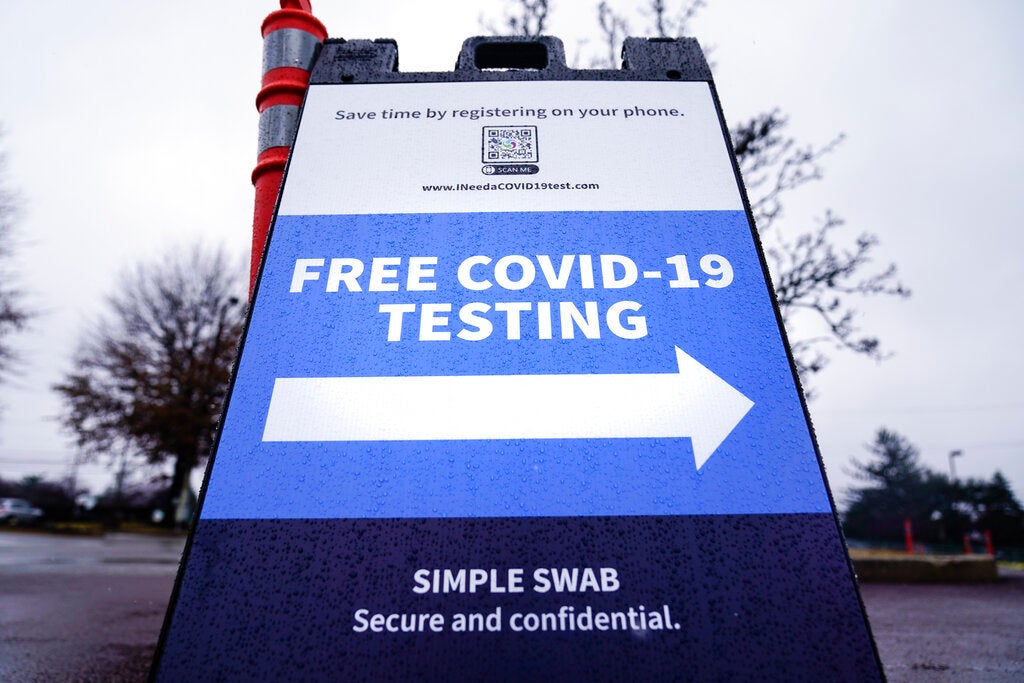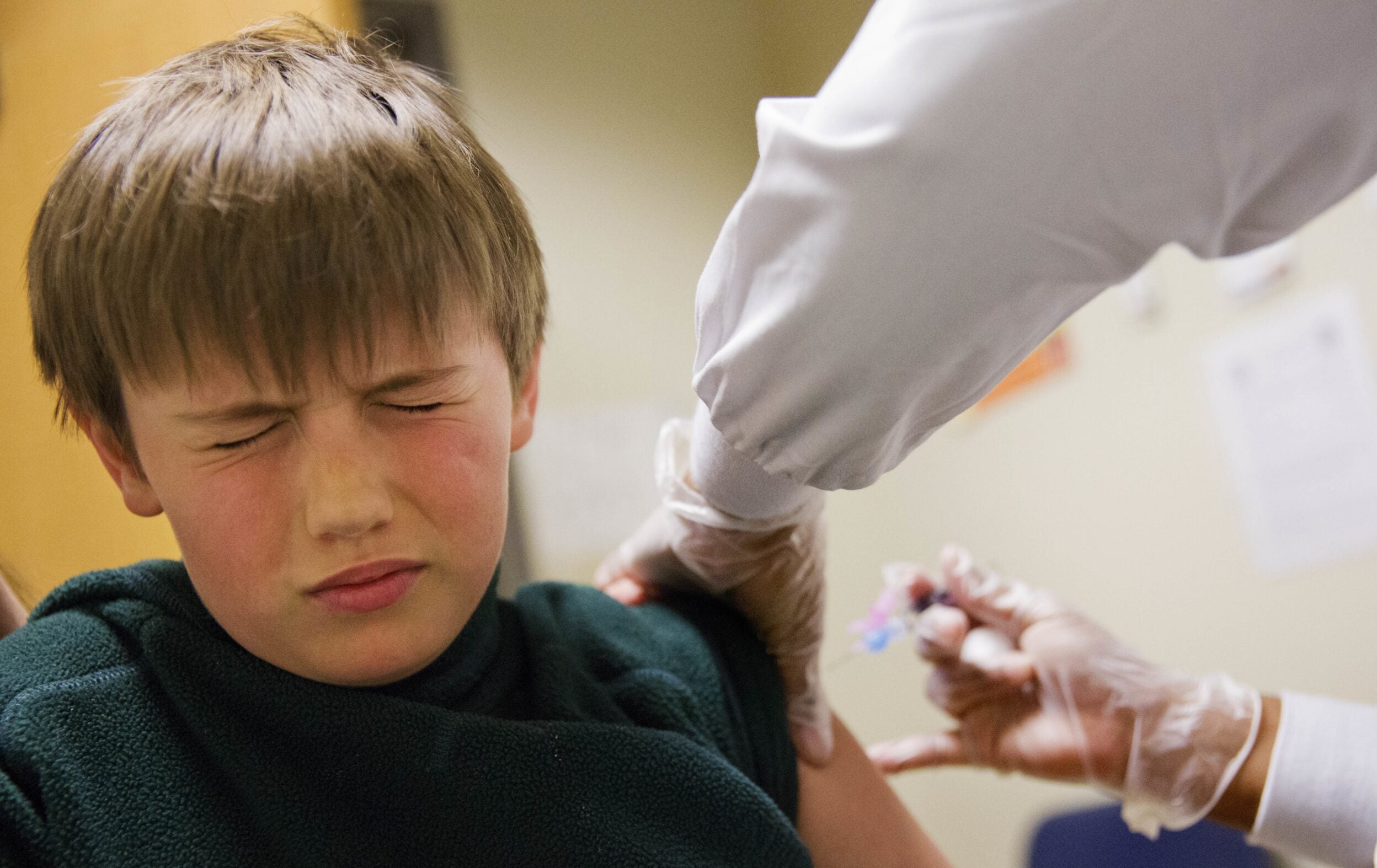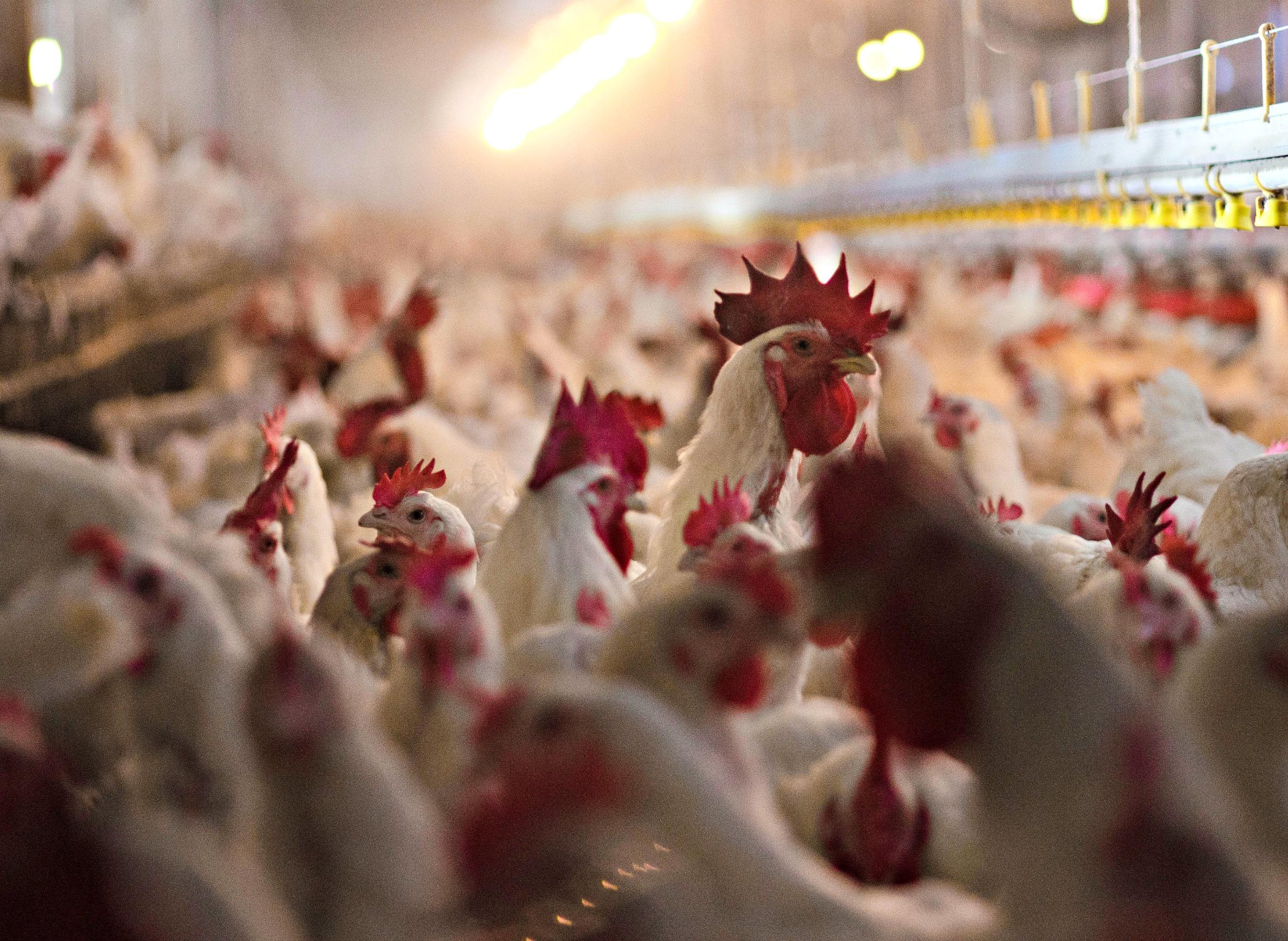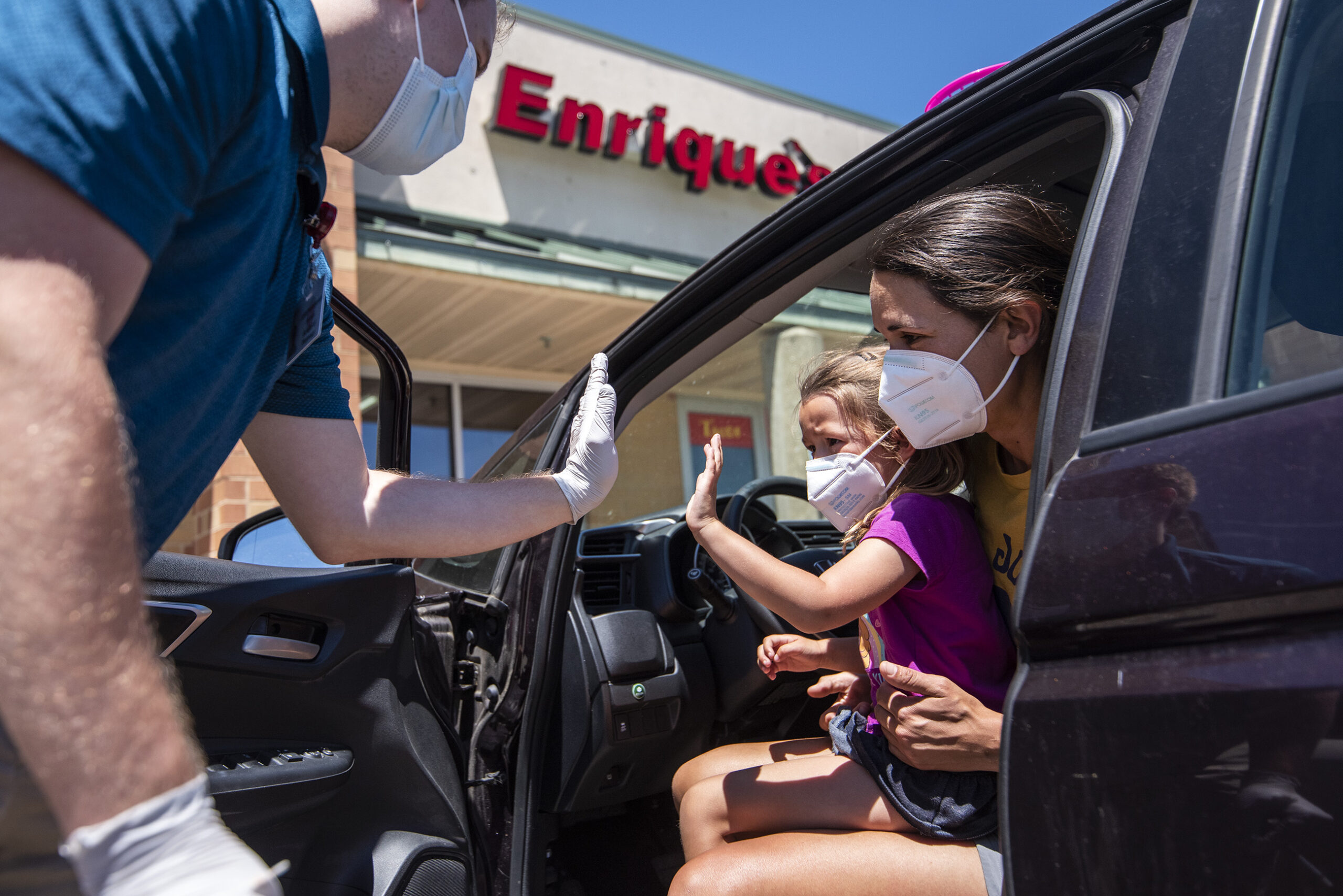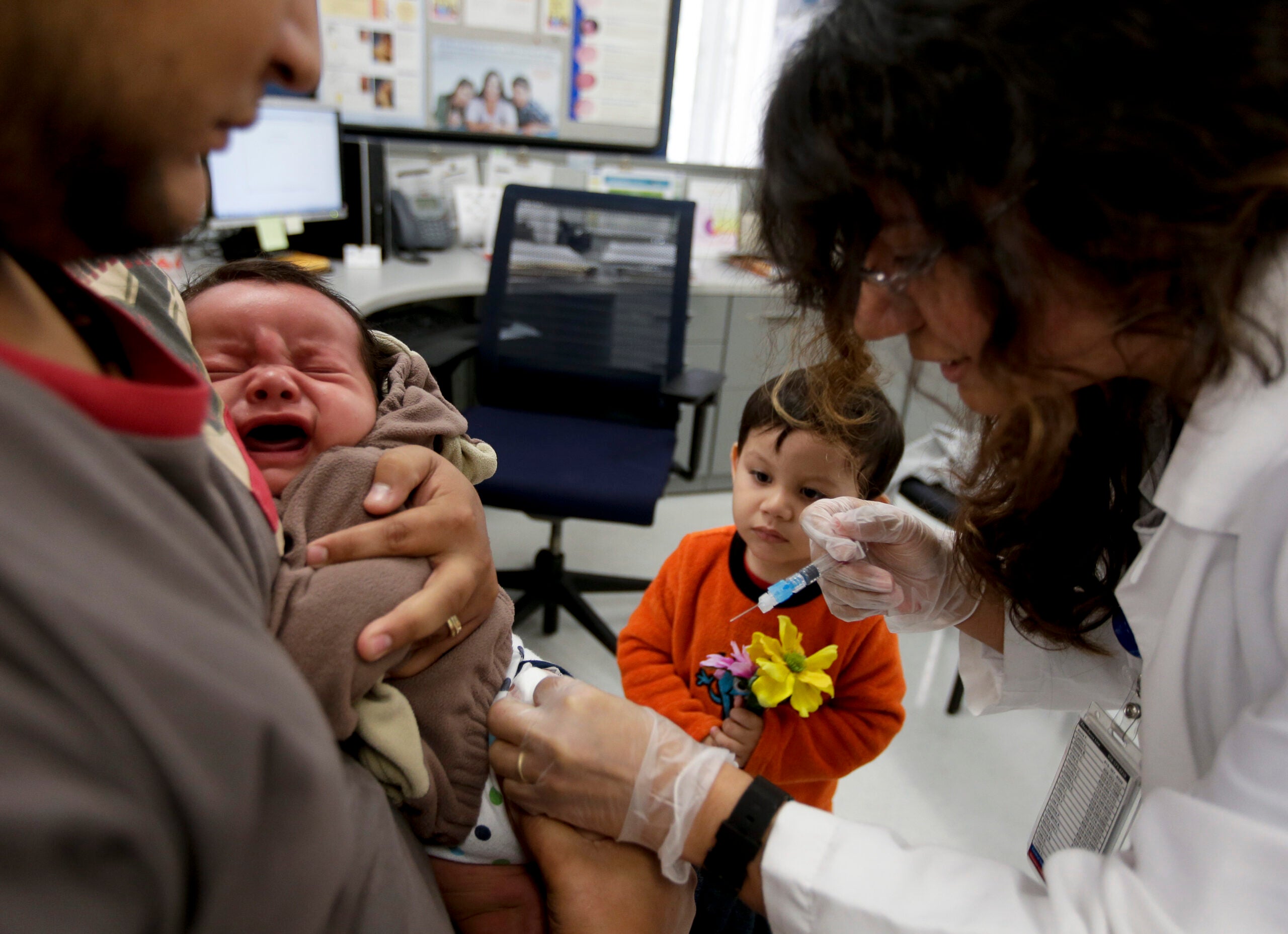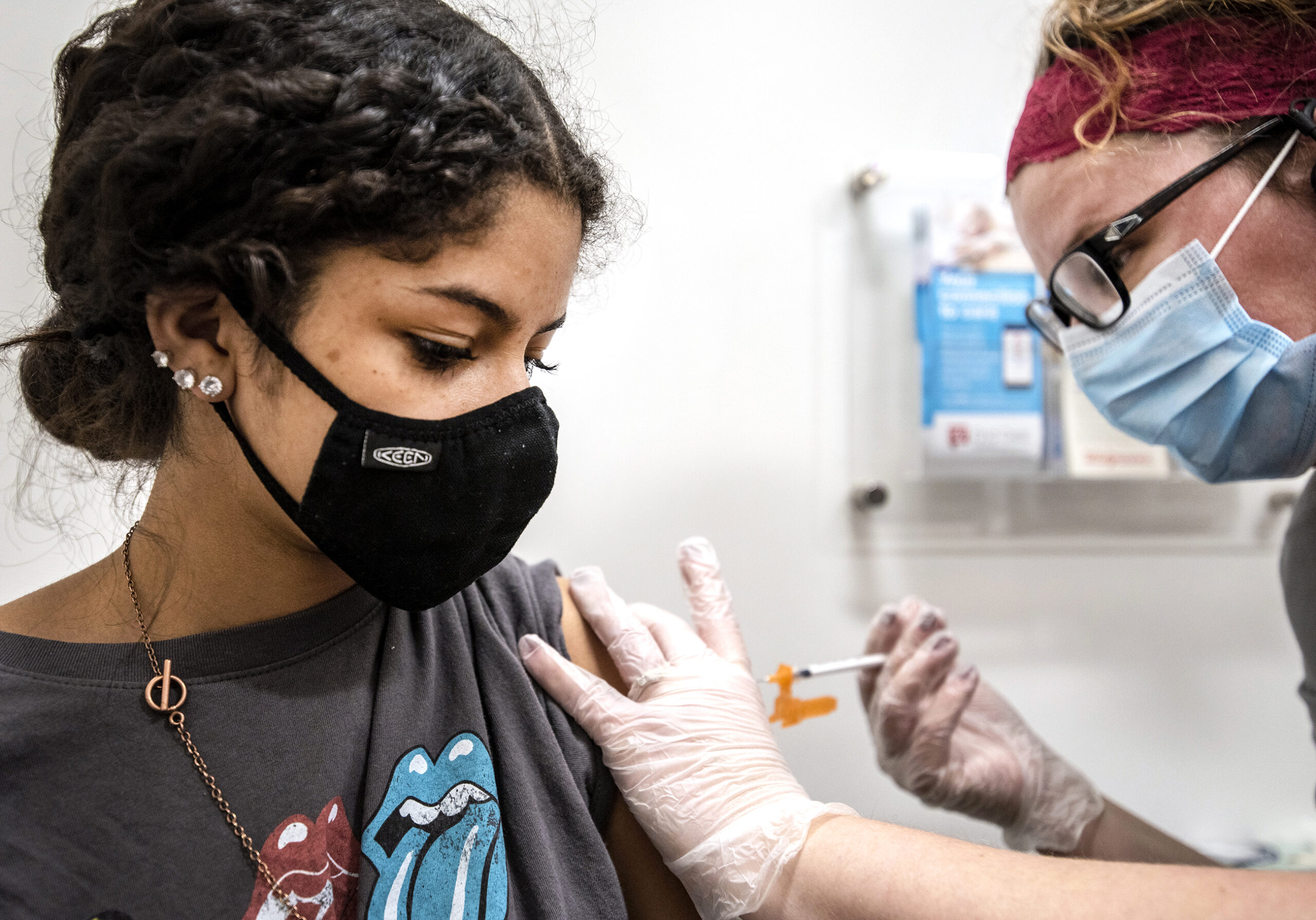Wisconsin is seeing an increase in the spread and impact of COVID-19 across the state, according to the state Department of Health Services.
“Omicron and its descendants continually become more and more transmissible, and that’s what’s changed the epidemic in an important way,” Wisconsin’s chief medical officer Ryan Westergaard told reporters Monday. “Being in the same room as a person who’s been infected is now a risk factor, it’s no longer, ‘You’re within 6 feet for 15 minutes’ – they’re just so much more easily transmitted.”
The seven-day average of positive COVID-19 tests was 13.9 percent as of Monday. That number has been on the rise since March 28. On Thursday, Friday and Saturday the state had a 14 percent positive test rate — the highest it’s been since early February, when Wisconsin was on the tail end of a surge driven by the omicron variant.
Stay informed on the latest news
Sign up for WPR’s email newsletter.
Community levels of COVID-19 are medium in 38 of the state’s 72 counties, and high in seven counties, according to the Centers for Disease Control and Prevention’s guidelines, which set those levels based on the number of cases and hospital capacity in a community. DHS is recommending people in those seven high-level counties mask while indoors — regardless of vaccination status.
“That’s intended to get the public’s attention, and say, ‘We need to try working a little harder than we have been to prevent transmission,’” Westergaard said. “People should be aware that the risk of getting exposed to the virus is much higher than it was a couple of months ago.”
Westergaard highlighted the availability of vaccines to everyone age 5 and up, as well as new treatments for people who contract COVID-19 that can reduce the severity of the disease, especially for people at higher risk of severe illness.
“We should be less concerned about severe disease, because we have these resources, and so I think that we should no longer feel potentially as frightened as we did in the past,” he said. “We should feel empowered that if, and when, we get exposed to the virus, there are things we can do to keep ourselves safe.”
While the overall number of cases has remained low, at a seven-day average of 2,193 as of Monday, experts say that’s not likely to provide as clear a picture of COVID-19 spread as it used to, since the use of at-home tests — which aren’t automatically reported in county or state data — is on the rise. The highest number of tests reported at the state level last week was about 22,000 — down from 60,000 in January, as omicron was peaking.
Wisconsin has been monitoring wastewater for SARS-CoV-2, which officials say can help pinpoint where the disease is on the rise and alert health officials to possible trends.
Wastewater monitoring in Wausau, Kenosha, Racine, Eau Claire and La Crosse counties, for example, has shown a major increase in virus concentration over the past week.
DHS officials have previously said that they can’t map the virus concentration in wastewater onto an estimate of how many positive COVID-19 cases would be in the area, but that in the past, increases in the virus in wastewater have correlated with increases in positive tests in those areas.
About 64 percent of Wisconsinites have received at least one dose of a COVID-19 vaccine. Vaccine manufacturer Moderna is seeking U.S. Food and Drug Administration approval to offer a vaccine for younger children.
Westergaard said a previous COVID-19 infection is not a substitute for vaccination, especially as recent studies have shown that infection from the COVID-19 variants circulating now do not seem to provide as much protection against other strains. People who are at least five months out from completing their initial vaccine series are all recommended to get a booster shot, regardless of whether or when they have been infected with COVID-19. A second round of booster shots is available to certain age groups and medically vulnerable populations.
He noted that that timing may be another reason cases are back on the rise. Many Wisconsinites contracted COVID-19 during the fall and winter surges driven by the delta and omicron variants, but as months have elapsed since many of those people got sick, they’re more likely to contract the virus again as immunity wears off.
“As time has gone on, we’ve seen that immunity wanes over time — four to five months, the antibody levels can dip back down, and that was the rationale for recommending the booster dose,” he said. “And if you’re in that category of getting a second booster, get a second booster.”
Although the rates of death and hospitalization from the disease have slowed in Wisconsin, recent research has linked the illness to other damaging health consequences. Some people contract long COVID, a chronic illness with varied symptoms. COVID-19 may cause changes to the brain, including tissue damage, and researchers have linked the disease to erectile dysfunction.
In Wisconsin, 12,957 people have died from COVID-19 since the beginning of the pandemic with an additional 1,548 deaths most likely COVID-19 related, according to DHS. The United States as a whole passed 1 million deaths from COVID-19 earlier this month, though experts estimate the actual death toll is higher.
Wisconsin Public Radio, © Copyright 2025, Board of Regents of the University of Wisconsin System and Wisconsin Educational Communications Board.
